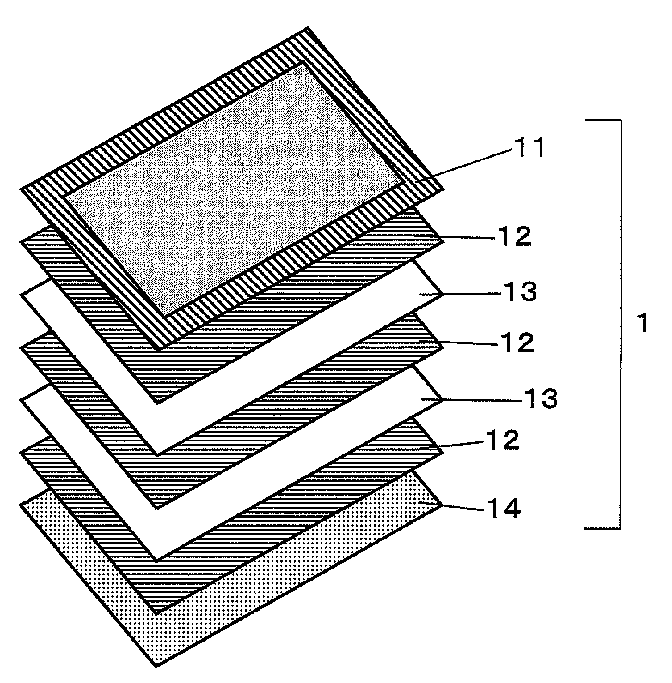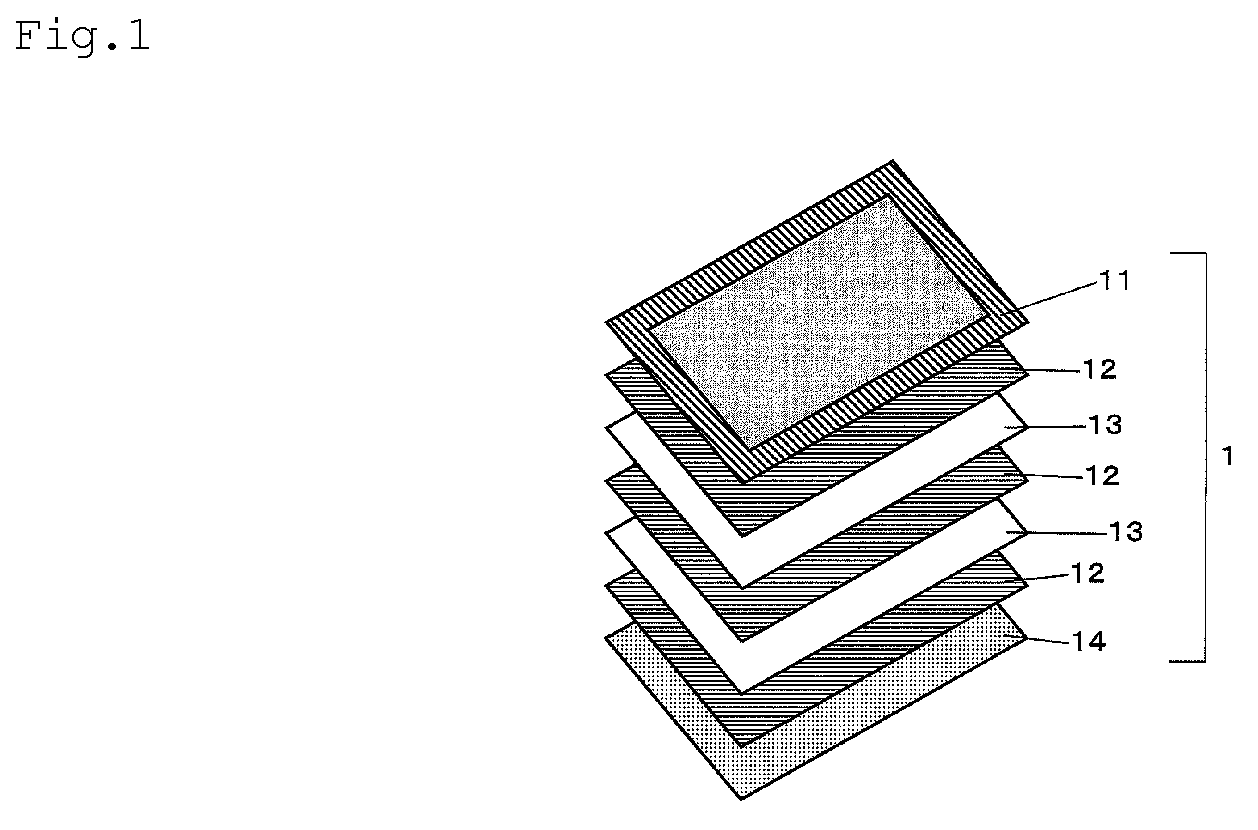Pressure-sensitive adhesive, pressure-sensitive adhesive layer, and pressure-sensitive adhesive sheet
a technology of adhesive layer and adhesive sheet, which is applied in the direction of film/foil adhesives, synthetic resin layered products, non-macromolecular adhesive additives, etc., can solve the problems of changing the designed capacitance, achieve satisfactory level of adhesive performance, reduce the dipole moment of the molecule, and reduce the dielectric constant
- Summary
- Abstract
- Description
- Claims
- Application Information
AI Technical Summary
Benefits of technology
Problems solved by technology
Method used
Image
Examples
example 1
Preparation of (Meth)Acryl-Based Polymer
[0146]To a four-neck flask equipped with a stirring blade, a thermometer, a nitrogen gas introducing tube, and a condenser were added 70 parts by weight of isodecyl methacrylate (ID), 20 parts by weight of lauryl methacrylate (LMA), 10 parts by weight of N-vinyl-∈-caprolactam (NVC), 10 parts by weight of 4-hydroxybutyl acrylate (HBA), 0.1 parts by weight of 2,2′-azobisisobutyronitrile as a polymerization initiator, and 110 parts by weight of ethyl acetate. Nitrogen gas was introduced for 1 hour to replace the air while the mixture was gently stirred, and then a polymerization reaction was performed for 15 hours while the temperature of the liquid in the flask was kept at about 62° C., so that a (meth)acryl-based polymer solution was obtained.
[0147]To the resulting (meth)acryl-based polymer solution were added 0.15 parts by weight of a trimethylolpropane adduct of xylylene diisocyanate (D110N (trade name) manufactured by Mitsui Chemicals, Inc.)...
PUM
| Property | Measurement | Unit |
|---|---|---|
| Tg | aaaaa | aaaaa |
| Tg | aaaaa | aaaaa |
| frequency | aaaaa | aaaaa |
Abstract
Description
Claims
Application Information
 Login to View More
Login to View More - R&D
- Intellectual Property
- Life Sciences
- Materials
- Tech Scout
- Unparalleled Data Quality
- Higher Quality Content
- 60% Fewer Hallucinations
Browse by: Latest US Patents, China's latest patents, Technical Efficacy Thesaurus, Application Domain, Technology Topic, Popular Technical Reports.
© 2025 PatSnap. All rights reserved.Legal|Privacy policy|Modern Slavery Act Transparency Statement|Sitemap|About US| Contact US: help@patsnap.com



